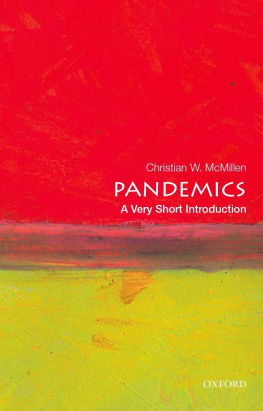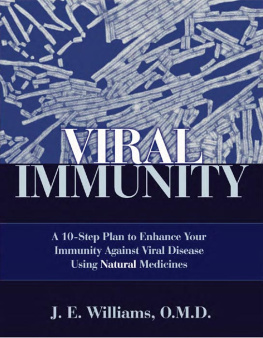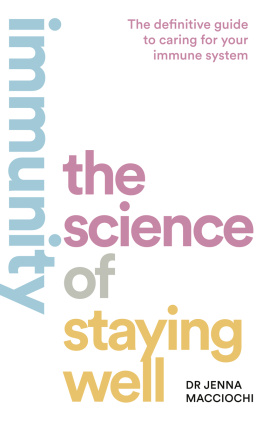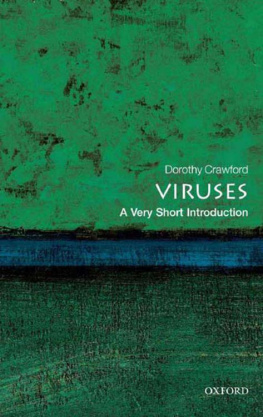Arup K. Chakraborty - Viruses, Pandemics, and Immunity
Here you can read online Arup K. Chakraborty - Viruses, Pandemics, and Immunity full text of the book (entire story) in english for free. Download pdf and epub, get meaning, cover and reviews about this ebook. publisher: MIT Press, genre: Romance novel. Description of the work, (preface) as well as reviews are available. Best literature library LitArk.com created for fans of good reading and offers a wide selection of genres:
Romance novel
Science fiction
Adventure
Detective
Science
History
Home and family
Prose
Art
Politics
Computer
Non-fiction
Religion
Business
Children
Humor
Choose a favorite category and find really read worthwhile books. Enjoy immersion in the world of imagination, feel the emotions of the characters or learn something new for yourself, make an fascinating discovery.

- Book:Viruses, Pandemics, and Immunity
- Author:
- Publisher:MIT Press
- Genre:
- Rating:4 / 5
- Favourites:Add to favourites
- Your mark:
- 80
- 1
- 2
- 3
- 4
- 5
Viruses, Pandemics, and Immunity: summary, description and annotation
We offer to read an annotation, description, summary or preface (depends on what the author of the book "Viruses, Pandemics, and Immunity" wrote himself). If you haven't found the necessary information about the book — write in the comments, we will try to find it.
Viruses, Pandemics, and Immunity — read online for free the complete book (whole text) full work
Below is the text of the book, divided by pages. System saving the place of the last page read, allows you to conveniently read the book "Viruses, Pandemics, and Immunity" online for free, without having to search again every time where you left off. Put a bookmark, and you can go to the page where you finished reading at any time.
Font size:
Interval:
Bookmark:
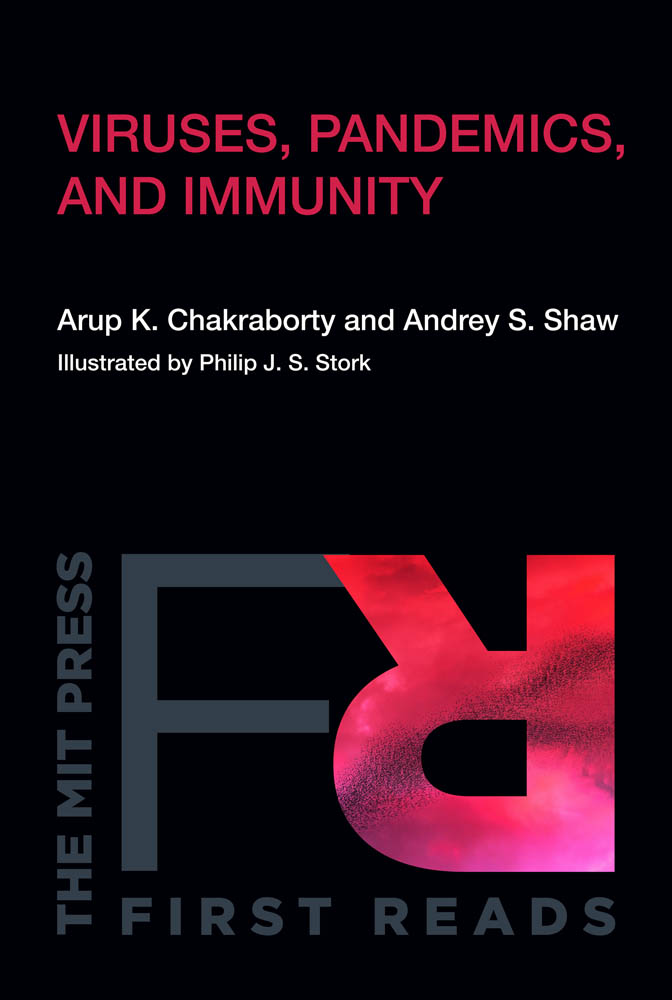
MIT Press First Reads
Economics in the Age of COVID-19, Joshua S. Gans
Viruses, Pandemics, and Immunity, Arup K. Chakraborty and Andrey S. Shaw
Arup K. Chakraborty and Andrey S. Shaw
illustrated by Philip J. S. Stork
The MIT Press
Cambridge, Massachusetts
London, England
2020 Massachusetts Institute of Technology
All rights reserved. No part of this book may be reproduced in any form by any electronic or mechanical means (including photocopying, recording, or information storage and retrieval) without permission in writing from the publisher.
ISBN: 978-0-262-36376-1, 978-0-262-36511-6
d_r0
To the victims and heroes of the COVID-19 pandemic
We are living in a moment of unprecedented crisis. The international spread of COVID-19 and the measures taken by governments to halt transmission of the virus are happening at a scale unlike anything seen in our lifetimes. As we grapple with the implications of social distancing and the tragic loss of human life, we need resources to help us make sense of this crisis.
The MIT Press mission challenges us to meet the need for reliable information at such a time. In this spirit, we offer the MIT Press First Reads series. These rapidly produced, digital-first titles will provide expert insight to inform matters of urgent local and global consequence. In addition to this rapid ebook, we plan to publish an edition of this book in both print and electronic formats in the spring of 2021.
The second book in the series is Viruses, Pandemics, and Immunity by Arup K. Chakraborty and Andrey S. Shaw. These leading scientists provide an authoritative yet concise overview of human immunology, the viruses that attack us and turn into epidemics and pandemics, and the vaccines and therapies that can mitigate the impact of these viruses. They end on a hopeful notethe impact of the next virus does not have to be as severe as COVID-19s if we plan for it and use what we have learned to create a more pandemic-resilient world.
The publication of this book reflects the best efforts of authors and publisher to respond quickly to the need for timely information without sacrificing rigor or editorial quality. This eBook was written in the midst of the unfolding crisis, with input from expert peer reviewers.
We hope that the information contained here helps you navigate through this uncertain time.

Throughout history humans have contended with pandemics, and the written record since antiquity is replete with references to plagues, pestilence, and contagion. The end of the Middle Ages through the beginning of the Renaissance, a period of heightened creativity, was accompanied by a new freedom of movement around the Mediterranean and between Europe and Asia. But this increase in mobility was also linked to the spread of the plague. The great bubonic plague of the fourteenth century occurred from 1347 to 1352. It spread throughout Europe and the Middle East, killing about 100 million people. The plague likely started in China and then passed into Eastern Europe through the Silk Road. Once in Italy, it was able to spread widely across Europe and eventually crossed the Mediterranean to the Middle East.
This was not the first or last time the world suffered because of the plague. In AD 500, a pandemic began in Constantinople, the heart of the Byzantine Roman Empire, resulting in the deaths of half the European population. The plague pandemic of the nineteenth century began in China in 1855 and first spread to India, where it killed over 10 million people. It would eventually spread across the world with famous outbreaks in Hong Kong, San Francisco, Mecca, Glasgow, and Cuba. It was during this pandemic that scientists were first able to identify that a certain kind of bacterium causes the plague. It has the official name Yersinia pestis, after its discoverer, Alexandre Yersin. Black rats were discovered to be the hosts of this bacterium, and fleas from these rats infected humans with the disease. These discoveries led to public health measures aimed at reducing rat infestation and the development of insecticides to control fleas. Combined with the subsequent development of a vaccine, the plague gradually became a thing of the past in most countries, and now only small outbreaks resulting in a few thousand cases are reported each year.
World War I saw one of the largest mobilizations of people around the world in history, with over 70 million troops involved. By 1917, many of these troops were mired in horrific conditions, sheltering in crowded trenches in northern France. This would prove to be a perfect breeding ground for a new pandemic that would kill 2050 million people, many more than were killed in four years of war (about 15 million, including 6 million civilian casualties). The huge loss of life due to the pandemic that began in early 1918 almost certainly contributed to ending the war on November 11, a day now remembered as Armistice Day, or in the United States as Veterans Day. The 1918 influenza pandemic was caused by a virus from the same family as the ones that cause the seasonal flu. Influenza viruses also caused pandemics in 1957, 1968, and 2009.
In addition to the flu pandemics, in the twentieth century, pandemics and epidemics caused by cholera, smallpox, tuberculosis, measles, leprosy, malaria, and human immunodeficiency virus (HIV) resulted in a staggeringly large number of deaths around the globe. Because of dramatic improvements in sanitation and modern medicine (vaccines, antibiotics, and antiviral drugs) the devastation wrought by pandemics was largely forgotten by us, the inhabitants of the twenty-first century.
But our perpetual battle with infectious disease-causing organisms and devastating pandemics is an integral part of the human story, and this war is not over. The enormous human and economic toll exacted by the rapidly spreading COVID-19 disease vividly reminds us that infectious disease pandemics are one of the greatest existential threats to humanity. Most of us lack an understanding of the conceptual frameworks and facts necessary to critically consider issues that have suddenly become pertinent. The goal of this book is to provide readers with a description of how viruses function and emerge to cause pandemics; how our immune system combats them; how diagnostic tests, vaccines, and antiviral therapies work; and how these concepts are a foundation for our public health policies. The narratives interweave scientific principles and ongoing efforts to combat COVID-19 with stories of the people behind the science. After reading this short book, we hope you will be an informed participant in debates about what we can do to safeguard the future by creating a more pandemic-resilient world. As we note in the concluding chapter, it does not have to be the way it has been with COVID-19 again. With the right investments and scientific advances, we could have the knowledge and tools that will help prevent such devastation in the future.
In the history of the war between pathogens and humans, there are two eras. In the first era, the subject of this chapter, humans were suffering from the misery of infectious disease but didnt know what caused them or how to mitigate their effects. Our ancestors observed, however, that individuals who recovered from these diseases did not get the same disease again, and thus could serve as caregivers during an outbreak. We will begin by briefly describing the earliest ideas regarding the origins of this observation, which we now understand to be acquired immunity. The attempt to harness this observation for human good is the history of vaccines. We will describe how the first era of our eternal battle with infectious diseases ended with one of the major achievements of medicine, the vaccine against smallpox. We will tell the tale here of how this procedure, which ultimately eradicated the scourge of smallpox from the planet, was developed slowly by several cultures on different continents in an empirical way without any understanding of how or why it worked. The following chapters will describe the second era when we learned about the origins of infectious diseases and how to combat them.
Next pageFont size:
Interval:
Bookmark:
Similar books «Viruses, Pandemics, and Immunity»
Look at similar books to Viruses, Pandemics, and Immunity. We have selected literature similar in name and meaning in the hope of providing readers with more options to find new, interesting, not yet read works.
Discussion, reviews of the book Viruses, Pandemics, and Immunity and just readers' own opinions. Leave your comments, write what you think about the work, its meaning or the main characters. Specify what exactly you liked and what you didn't like, and why you think so.




